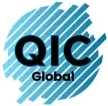QIC Global and Bluewolf are the same company.
QIC Global and Bluewolf are the same company.

Sustainable business practices make the world a better place. ISO 14001 is the practical guidance provider to meet regulatory requirements for environmental management. The certification works as the best support system when it comes to competitive advantage and brand reputation. To demonstrate your commitment to society and the environment, you must invest time and resources in minimizing the carbon emission level. As per global reports, more than 60% of small and medium companies do not care for an ISO certification for environmental sustainability. However, the growing concern about greenhouse emissions and the lack of responsibilities among organizations make it obvious that a strict protocol is necessary.
Looking forward to improving individual business operations for better sustainability efforts, small companies are now likely inclined towards the ISO 14001 standard. The clauses help to adhere to the regulatory conditions. By offering a stringent set of clauses for the implementation and maintenance of an effective system, ISO 14001 provides comprehensive support. With the ongoing awareness, the question – “How to get iso 14001 certification” surfaces on the internet.
The following blog unfolds the process and lists the advantages.
How to get iso 14001 certification?
1. A detailed understanding of the standard – The management and the workers must not lack the fundamental concept of environmental management. They must have a clear understanding of the terminologies and definitions associated with the certification. Ten clauses of ISO 14001 hold the compliance ground. To accomplish them, the first step is contemplating their nature and aim. The workers will perform according to the expectations only when they have a firm idea of what are the responsibilities as per the clauses. To enhance their proactiveness and eagerness to be involved in the operations, this step is crucial.
2. Defining leadership – The next step is asking the management for the required commitment. A devoted management team determines the success with certification. Transformational leadership among the personnel enhances productivity. Such management increases the morale of the employees. When management values the contribution of workers, they boost their enthusiasm. This is essential for designing policies procedures and surveillance.
3. Policy and process designs – There should be a compact set of policies and procedures that clearly define the motive and objectives. While designing the procedures for minimizing the footprint, the management must acknowledge the policies. The process must align with the policies. After designing both, the authority must arrange for a meeting or workshop where the workers will be notified and informed.
4. Risk management and resource optimization – It is better to stay updated about the potential situations that can pose serious threats. The management must conduct evaluations for detecting, aggregating, and preventing the risks. To do that, optimization of the relevant resources would be necessary. The management must consider trying apt alternatives if the required options are not available in the market. Sustainability management is possible when a company utilizes proper instruments.
5. Employee training – Many times, all the efforts turn futile as the employees take zero responsibility. Competence analysis and training according to the needs help to comply with the regulatory terms. Online training programs are less time-consuming. They fulfill the purpose of educating the workers while not taking an enormous time.
6. Audit and selection of a certification body – After the system starts to work according to the policies, it is time for an internal audit. It will check and compare the results. The audit will highlight the areas of non-conformities and the management will start the rectification accordingly. After acquiring a satisfying result, the authority must select a certification body that will conduct separate certification audits.
7. Surveillance – One must acknowledge the importance of surveillance analyses. An ISO certification is valid for 3 consecutive years. A yearly internal audit ensures that the system complies with the legal obligations.
To know more about the certification and audit procedures, get in touch with QIC Global. It is the most reliable service provider that offers comprehensive help. Their experience in the industry and skills are unmatched. Their professional support to know about “how to get iso 14001 certification” or audits makes the process hassle-free.
